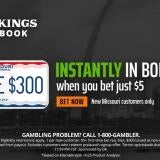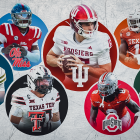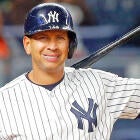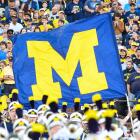Tony Khan talks potentially expanding AEW Dynamite to three hours: 'You want to keep it as strong as possible'
Khan also addresses AEW's live attendance and the need for a challenger brand

It's a pivotal year for All Elite Wrestling. AEW president Tony Khan celebrated five years since the promotion's inaugural Double or Nothing event over the weekend. He is also currently negotiating the company's media rights deal. A strong deal will likely spark the company's first profitable year and shape its rapidly expanding content.
AEW currently produces five hours of AEW programming every week. It's the growth Khan is most proud of after launching the company in 2019 with one pay-per-view and no TV shows. AEW Dynamite, Collision and Rampage are generally spread across three nights, but the company has recently coupled some of their shows to accommodate the NBA and NHL Playoffs. For example, the company aired a three-hour block on May 11 with Collision leading directly into Rampage -- in terms of scheduling and storytelling.
"I love being able to do more follow-up with things that happened earlier in the night with more time," Khan told CBS Sports. "Being able to cover more wrestlers and tell more stories, utilize more of the roster. I think it gives more opportunities when we have that three-hour block."
Consecutive programming allows AEW not only to tie story beats from one show to another -- such as how the May 11 episode of Rampage started with a post-match segment between Adam Copeland and Kyle O'Reilly following their Collision main event -- but also more flexibility to pivot on the fly. A bloodied Will Ospreay filmed a passionate promo after being attacked by his rivals on AEW Dynamite. It was an unplanned moment that Khan would have incorporated into that evening's programming with more time.
"If I had seen that I would have moved stuff around later in the third-hour block to get that on TV the same night," Khan said. "Those are the things you can do when you get really good footage and have more time to play with. There are all kinds of opportunities it creates to follow up. I've really enjoyed it."
EXCLUSIVE! After being left beaten and bloodied on #AEWDynamite at the hands of the Undisputed Kingdom, an INCENSED @WillOspreay has a final message for #AEW International Champion @RoderickStrong before their match at #AEWDoN! pic.twitter.com/SFw2AKAlun
— All Elite Wrestling (@AEW) May 23, 2024
Khan is "very open" to doing more three-hour blocking and says there is a "good chance" fans will see more. It's sparked curiosity about permanently reallocating AEW's five hours of weekly programming from three nights to two. One possibility is to expand AEW Dynamite to three hours every week. It's a challenging debate that greatly interests Khan.
Dynamite is AEW's golden goose. The show consistently ranks high in its timeslot. It does so despite overall viewership declines that can only partially be attributed to cord-cutting. According to pro wrestling business reporter Brandon Thurston, Dynamite's continued success in TV ratings and key demos are the foundation of the company's media rights leverage. How Dynamite is presented is very important. WWE's longest-running show Monday Night Raw permanently expanded to three hours in 2012. More television means more ad space, but Raw often feels lethargic because of its length.
"You want to keep Dynamite as strong as possible," Khan said. "You look at the history of what happened with the two-hour wrestling show when that show was expanded to three hours. It's interesting right now per hour the most we get per hour for any of our TV shows is Dynamite. Either way, five-hour weekly programming is the absolute minimum.
"So in some ways, you would say, 'That would be a very lucrative opportunity.' I think it's a very interesting conversation to have about how many nights a week you allocate to programming. Is five hours the best? Should we do six?"
Khan hasn't settled on a long-term plan for how AEW shows are spaced out but he is confident there is no turning back.
"I want to do at least five now," Khan said. "I've tasted blood and want more so I could easily be sold on doing more than five hours of programming..."
Spend too much time online and you'll think the sky is falling on AEW. An online "tribalism" exists that maliciously pits fans of competing wrestling promotions against one another, each side wishing for the other's demise. This is hilariously contrasted by how thrilled wrestlers are to have more options. Competition is a good thing and AEW's existence gives talent more opportunities to make a living.
Rising stars like MJF and Ospreay can establish themselves as long-term attractions while legends like Copeland and Bryan Danielson have added chapters to their storied careers. The influence is felt across the waters, too. The current presentations of undisputed WWE champion Cody Rhodes and WWE women's tag team champion Jade Cargill were shaped in AEW.
But tribalism isn't strictly to blame for the doom and gloom rhetoric. There are optics too. AEW's live attendance and total viewership, per Wrestlenomics, are declining at a time when WWE is selling out arenas and increasing viewership after the end of the Vince McMahon era.
AEW is still selling thousands of tickets to every televised show and in the case of some PPVs, more than 10,000 seats are filled. The promotion debuted at Wembley Stadium last year selling over 70,000 or 80,000 tickets, depending on the source, and more than 16,000 were in attendance for Sting's retirement match at AEW Revolution in March. According to WrestleTix, the 2024 edition of All In has sold more than 40,000 tickets three months out from the Aug. 25 show. AEW is still successful but seems to have lost momentum with the wider audience.
Khan says the company has made meaningful changes to their live events and marketing teams. The promotion recently enlisted Clemson University's former chief marketing officer Kosha Irby as AEW's chief content officer. Khan is confident Irby's experiences in basketball, football and pro wrestling will positively impact AEW's revised approach to live events.
"Kosha is incredibly knowledgeable and skilled and he's making a lot of changes to our routing, our marketing and these are changes that will take some time," Khan said. "But he's really experienced and I really trust him and think we're going to keep growing and expanding.
"It's just the nature of online discourse but I think people will always push a negative story further than a positive story."
AEW launched in 2019 with great enthusiasm and fan feedback. There was meaningful demand for an alternative to WWE at a time when many fans had grown tired of McMahon's creative direction. WWE saw a return to form commercially and critically in the last two years under the creative lead of Paul Levesque, formerly Triple H. It's sparked a narrative that wrestling fans didn't really want an alternative to WWE, they just wanted WWE to be better. It's a narrative that Khan -- and the fans who buoy Dynamite to strong ratings -- reject.
"I don't think that's the case," Khan said. "I have lived through some of this because I was a big fan of pro wrestling in the '90s. I think in the '90s as it went on from the mid-'90s to the late '90s, the WWF product got a lot better and the WCW product did not. It was a very interesting thing that played out through the late '90s watching the shows but it didn't have to be like that. I think wrestling needs a challenger brand."
Khan pointed to Sting's retirement at Revolution and the critically acclaimed Ospreay vs. Danielson match at AEW Dynasty as shining examples of why AEW is so valuable to wrestling.
"I think what we do is really important. We have had two pay-per-views this year," Khan said prior to Double or Nothing. "They have been two of the best shows we've ever done. I don't know how anyone could say a bad word about anything on Revolution. It was my favorite day ever in the wrestling business."
Khan is "very optimistic" that AEW will reach a new media rights deal with Warner Bros. Discovery that will make the company profitable in 2025 and the tone for the following years.
"The company is very stable and has a great future, I can promise you that," Khan said. "We're having great negotiations for the future TV contract and we have this amazing roster. We're in a great place. It's a very exciting time for AEW."
















